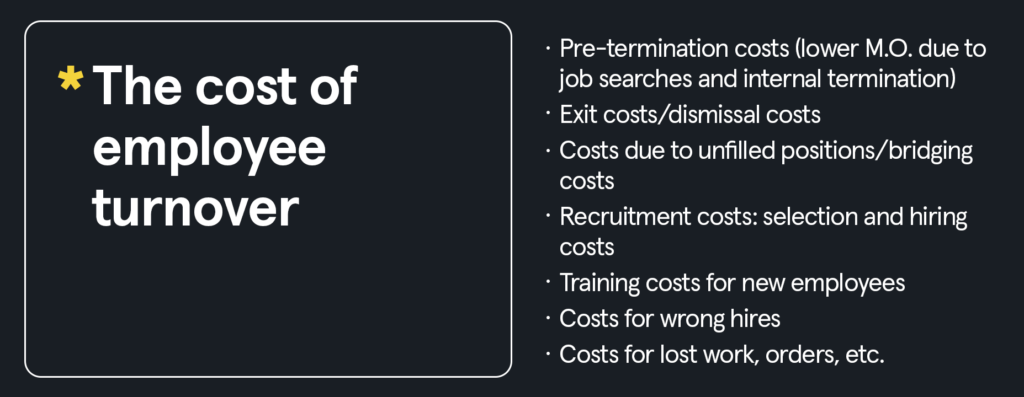
When it comes to employee health in Germany, the focus is often on absenteeism. And to be sure, absenteeism rates have risen dramatically over the last 13 years. In 2018 alone, we’ve seen a 37% increase compared to the ten years prior. According to the AOK Absenteeism Report, which studied 14.1 million AOK-insured employees from 1.6 million companies, absenteeism in 2020 amounted to 19.9 days per insured person. In addition to employment figures, demographic changes and age-related illnesses are other main factors driving this trend.
Regardless of the cause, the increase in absenteeism makes it clear that we need to fundamentally rethink employee health and move towards a more holistic approach. But why is it worth investing in employee health and what are the goals in doing so? We’ll get to the bottom of these and other questions here.
It pays to invest in employee health
Neglecting employee health can have dire consequences for companies. These include:
- Higher turnover
The premature departure of a qualified specialist after about one year costs one to two times what an annual salary would, and even more for managers.
- High absenteeism
According to a 2020 joint analysis by Asklepsios Clinics and management consultant Roland Berger, the increased number of sick days from 328 million in 2008 to 449 million in 2018 shows that companies have not invested enough in employee health.
- Physical maladies
In a DEKRA occupational safety study from 2021, around one in three respondents complained of health challenges due to poor, non-ergonomic working setups in their homes. 36 percent stated that they suffer from tension, back pain or headaches.
- Stress
According to the Manpower Group’s Job Satisfaction 2019 study (1004 respondents in Germany, including 753 professionals), 47% of respondents said they regularly suffer from issues triggered by stress at work.
- Burnout
In a YouGov USC Study from 2021, 21% of respondents said their employees suffer from burnout.
- Dissatisfaction
According to the same YouGov USC Study, every fourth respondent stated that employees were listless or unmotivated.
The goals of strong employee health
Improving employee health has massive benefits, both external and internal. Let’s take a look.
External
- Competitiveness
Healthy, motivated employees help companies seize and embrace market opportunities, enabling them to compete internationally against their competitors.
- War of talent
Demographic change is fueling the war of talent. Companies that can credibly demonstrate their strong commitment to the health of their employees benefit from a better image (employer branding). These companies are recommended more often, becoming more visible and interesting for potential recruits.
- Increase in customer satisfaction
Healthy employees are more satisfied. And because satisfied employees are positive brand ambassadors, they behave more positively toward customers – which in turn increases customer satisfaction.
Internal
- Deeper satisfaction
Physically and mentally healthy employees are central to a positive working atmosphere, as those who feel physically and mentally healthy are more open to others.
- Reductions in turnover
Satisfied employees have fewer reasons to look for a new job. Employees benefit from long-term relationships and a company who is looking out for their best interests, while companies benefit from motivated employees and considerable cost savings.
- Higher motivation
If you’re healthy and fit, it’s easier to do many things well – including your job. Above all, healthy employees are more motivated to take on opportunities and challenges – a win-win situation for employees and companies.

Employee health as part of the corporate culture
Following the WHO’s definition of health, it’s clear that employee health is about more than just the absence of illness – and ergonomic seating. If comprehensive physical, mental and social wellbeing is the benchmark of a healthy workforce, then a holistic view of corporate culture is essential.
What’s a strong corporate culture? For starters, it’s about creating a well-balanced, inclusive environment supported by mutual appreciation. This is the basis for a genuine feedback culture – one that sees mistakes as potential for improvement and views disagreements as an opportunity to find positive solutions.
In addition, a healthy corporate culture supports a good work-life balance for its employees. Here, office design, hybrid work models and, yes, ergonomic seating are incredibly important.
A strong corporate culture has a unifying effect. When companies don’t promote and invest in their corporate culture, the sense of community will always be missing – which will undoubtedly affect employee health.
So, when thinking about how to improve employee health, make sure you invest in your corporate culture! Communication and mutual trust have a positive effect on the health of your employees. Your teams can develop common goals so that everyone is truly committed to achieving them. Those who share common values and objectives will be much more motivated to commit themselves to your company day in, day out – leading to a stronger, healthier and more unified workforce.





